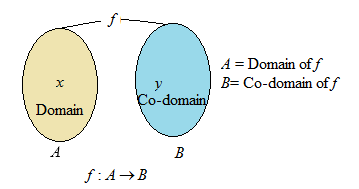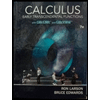
Concept explainers
To find: The domain of a function in interval notation.
The domain D of the function g(x)=3√2x−1 is the interval notation written as (−∞,1/2) .
Given information: The function is g(x)=3√2x−1 .
Method/Formula used:
Suppose y=f(x) be a function f:A→B , x∈A,y∈B the set A is called the domain of function f and set B the co-domain. Thus, the domain of a function f(x) are the values of x for which the function f(x) is defined.

Calculation:
The given function is g(x)=3√2x−1 . This function is not defined when 2x−1 is zero 2x−1 is negative, i.e., when 2x−1≤0 or x≤1/2 for other values of x from the set of real numbers ℝ or(− ∞,∞) , g(x)=3√2x−1 is defined.

Therefore, the domain D of the function g(x)=3√2x−1 is the interval notation written as D=(−∞,1/2) .
Chapter 1 Solutions
PRECALCULUS:GRAPH...-NASTA ED.(FLORIDA)
- quick solve thisarrow_forwardquick solve thisarrow_forwardThis table displays the current in equal intervals. Time t/ms 05 10 15 20 25 30 Current i/A 0 4.8 9.1 12.7 8.8 3.5 0 The formula for the charge as follows: 30x10-3 q 0 i dt Use formula to solve the current at 30ms using both the trapezoidal rule and Simpson's rule showing all steps and workingarrow_forward
 Calculus: Early TranscendentalsCalculusISBN:9781285741550Author:James StewartPublisher:Cengage Learning
Calculus: Early TranscendentalsCalculusISBN:9781285741550Author:James StewartPublisher:Cengage Learning Thomas' Calculus (14th Edition)CalculusISBN:9780134438986Author:Joel R. Hass, Christopher E. Heil, Maurice D. WeirPublisher:PEARSON
Thomas' Calculus (14th Edition)CalculusISBN:9780134438986Author:Joel R. Hass, Christopher E. Heil, Maurice D. WeirPublisher:PEARSON Calculus: Early Transcendentals (3rd Edition)CalculusISBN:9780134763644Author:William L. Briggs, Lyle Cochran, Bernard Gillett, Eric SchulzPublisher:PEARSON
Calculus: Early Transcendentals (3rd Edition)CalculusISBN:9780134763644Author:William L. Briggs, Lyle Cochran, Bernard Gillett, Eric SchulzPublisher:PEARSON Calculus: Early TranscendentalsCalculusISBN:9781319050740Author:Jon Rogawski, Colin Adams, Robert FranzosaPublisher:W. H. Freeman
Calculus: Early TranscendentalsCalculusISBN:9781319050740Author:Jon Rogawski, Colin Adams, Robert FranzosaPublisher:W. H. Freeman
 Calculus: Early Transcendental FunctionsCalculusISBN:9781337552516Author:Ron Larson, Bruce H. EdwardsPublisher:Cengage Learning
Calculus: Early Transcendental FunctionsCalculusISBN:9781337552516Author:Ron Larson, Bruce H. EdwardsPublisher:Cengage Learning





